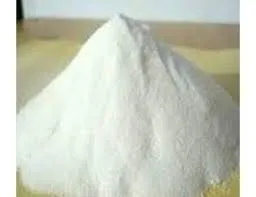
Dec . 20, 2024 03:22 Back to list
hpmc for gypsum
HPMC for Gypsum Enhancing Performance and Workability in Construction
Hydroxypropyl Methylcellulose (HPMC) has emerged as a crucial additive in the construction industry, particularly in gypsum-based materials. As a cellulose ether, HPMC significantly improves the performance and workability of gypsum products, making them increasingly popular in various applications, including plastering, tiling, and interior finishing.
Understanding HPMC
HPMC is a white to off-white powder that is soluble in water and forms a clear, viscous solution. It is derived from natural cellulose through a series of chemical modifications, which grant it unique properties. HPMC is non-ionic, making it compatible with a wide range of other additives, and it is also free from any significant toxicity, allowing for safe use within building materials.
Benefits of HPMC in Gypsum
1. Improved Workability One of the primary advantages of adding HPMC to gypsum formulations is the enhancement of workability. It acts as a thickening agent, allowing for a smoother consistency in the mixture. This improved consistency is crucial during application, as it allows workers to spread the gypsum evenly without excessive effort. This feature is particularly beneficial for plaster applications where a smooth finish is desired.
2. Extended Open Time Gypsum-based products often face challenges related to drying times. HPMC effectively extends the open time, enabling workers to manipulate and adjust the material before it sets. This flexibility is essential in large projects where multiple layers may be applied, ensuring that each layer adheres well without premature setting.
3. Enhanced Adhesion The addition of HPMC improves the adhesion properties of gypsum. When applied to surfaces, HPMC-modified gypsum can bond more effectively, reducing the risk of cracking or delamination over time. This enhanced adhesion is particularly important in flooring and wall applications, where durability is a critical factor.
hpmc for gypsum

4. Water Retention HPMC significantly enhances the water retention capabilities of gypsum products. This property is beneficial not only during application but also during the drying process. By retaining moisture, HPMC aids in the proper curing of the gypsum, allowing for a stronger end product. This moisture retention is particularly useful in environments with low humidity, where rapid drying could lead to defects such as crazing or cracking.
5. Customization and Versatility HPMC can be modified to achieve various levels of viscosity and water retention, allowing manufacturers to customize their gypsum products to meet specific application requirements. This versatility means that HPMC can be incorporated into a wide range of gypsum formulations, from anhydrite-based products to hemihydrate formulations, enhancing the overall performance of each mixture.
Applications in the Construction Industry
The inclusion of HPMC in gypsum products has vast implications for the construction industry. For instance, in tile adhesive formulations, HPMC ensures optimal bonding while allowing for extended workability, ensuring tiles can be repositioned without loss of adhesion. In gypsum plaster, HPMC not only improves application characteristics but also contributes to the aesthetic qualities of the finished product by allowing for a smoother surface.
Furthermore, in environments that experience fluctuations in temperature and humidity, HPMC-modified gypsum products exhibit superior performance, leading to a reduction in common issues associated with traditional gypsum applications. This reliability is invaluable for both residential and commercial construction.
Conclusion
In conclusion, HPMC is a vital additive that significantly enhances the properties of gypsum materials used in construction. Through improved workability, extended open time, enhanced adhesion, and water retention, HPMC not only makes the application process more efficient but also ensures the durability and strength of the final product. As the construction industry continues to evolve and demands more sophisticated materials, the role of HPMC in gypsum applications will likely expand, paving the way for innovative solutions in building practices. Thus, understanding and utilizing HPMC in gypsum formulations can lead to improvements in both the quality and efficiency of construction projects.
-
Versatile Hpmc Uses in Different Industries
NewsJun.19,2025
-
Redispersible Powder's Role in Enhancing Durability of Construction Products
NewsJun.19,2025
-
Hydroxyethyl Cellulose Applications Driving Green Industrial Processes
NewsJun.19,2025
-
Exploring Different Redispersible Polymer Powder
NewsJun.19,2025
-
Choosing the Right Mortar Bonding Agent
NewsJun.19,2025
-
Applications and Significance of China Hpmc in Modern Industries
NewsJun.19,2025







